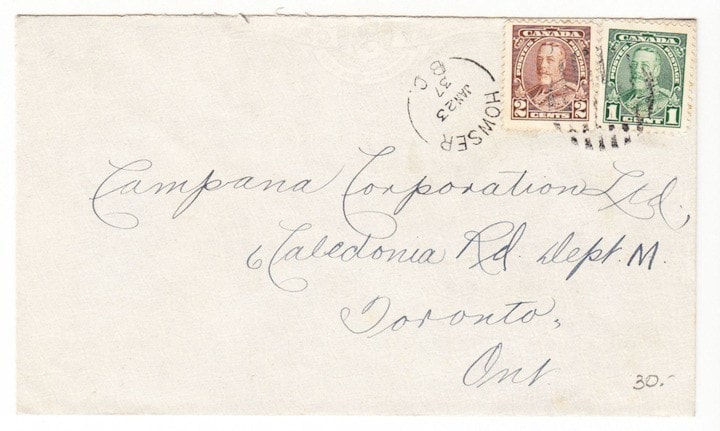Eighty-ninth in an alphabetical series on West Kootenay/Boundary place names
Last week we began looking at the origins of Howser, one of the most puzzling and convoluted local place names.
We got as far as April 23, 1900 when W.D. Mackay surveyed a new townsite on Lot 528 for William Simpson and Shirley Keeling, previously known as Duncan City. This time they called it Hauser.
The streets were Spokane, Nelson, Kaslo, Denver, Slocan, Lardo, Duncan, Water, Simpson, Shirley, Keeling, Sandon, Hall, Reno, Abbey, Ward, Forbes, Nagle, and Wallace. The lone avenue was called Hauser, as was the lake shown on the map.
Why was this spelling used instead of the far more common Howser?
Paul and Marion Howser of Reigate, Surrey, England have given this a lot of thought during a more than 30-year search for answers. Their best guess is that it was to help secure the terminus for the Great Northern Railway’s Kaslo and Lardo-Duncan line — the townsite plan shows the proposed railway passing through the town. However, it was never built.
The Great Northern was familiar with the spelling Hauser because it had a station at Hauser Junction in northern Idaho (which we’ll discuss more in the next installment).
Simpson and Keeling used the spelling Hauser despite the fact the post office had been renamed Howser only four months earlier.
The postal application, submitted in June 1899, was under the name Duncan. It was approved and opened on Sept. 1 of that year, but William Simpson, originally proposed as postmaster, was passed over in favor of W.V. Bradshaw.
The postmaster general soon complained “that inconvenience has been caused by the similarity of the name of the Duncan post office, recently established … to that of the Duncan’s Station post office.”
The Nelson Tribune of March 12, 1900 commented: “It seems that the post office officials can’t see the difference between Duncans on Vancouver Island and Duncan City up the lake. Sometimes the letters to the island place come up here and vice versa. So the official name of the little lake town is hereafter to be Howser.”
The change took effect Jan. 1, 1900.
In an interview published in Where the Lardeau River Flows, resident Billy Clark exaggerated a bit when he said: “Our post office was Duncan Lake and all the mail used to go to Duncan on Vancouver Island so they changed it to Hauser and then all our mail went to Bowser. And we got it changed to Howser which is the name today and now it goes to Fernie and all over the country.”
In 1905, William Simpson, who took over as postmaster a year after the office opened, told the Geographic Survey of Canada the original spelling was Hauser and that when the post office’s name changed from Duncan, “the then postmaster in writing the department spelled it Howser, so it remains to this day.”
The evidence, however, is that the name had been widely spelled Howser, including on Simpson’s own survey plan for Lot 528, completed 13 years earlier.
The post office moved in 1966 prior to completion of the Duncan dam, which flooded much of the original townsite. It closed in 1969.
Next: Who was Howser’s namesake?
Previous installments in this series
Applegrove, Appleby, and Appledale revisited
Bakers, Birds, and Bosun Landing
Bannock City, Basin City, and Bear Lake City
Bealby Point (aka Florence Park) revisited
Boswell, Bosworth, Boulder Mill, and Broadwater
Brooklyn, Brouse, and Burnt Flat
Camborne, Cariboo City, and Carrolls Landing
Carmi, Cedar Point, Circle City, and Clark’s Camp
Carson, Carstens, and Cascade City
Christina City and Christian Valley
Cody and Champion Creek revisited
Champion Creek revisited, again
Columbia City, Columbia Gardens, and Columbia Park
Crawford Bay and Comaplix revisited
Dawson, Deadwood, and Deanshaven
English Cove and English Point
Forslund, Fosthall, and Fairview
Fort Shepherd vs. Fort Sheppard, Part 1
Fort Shepherd vs. Fort Sheppard, Part 2
Gladstone and Gerrard, revisited
Granite Siding and Granite City
